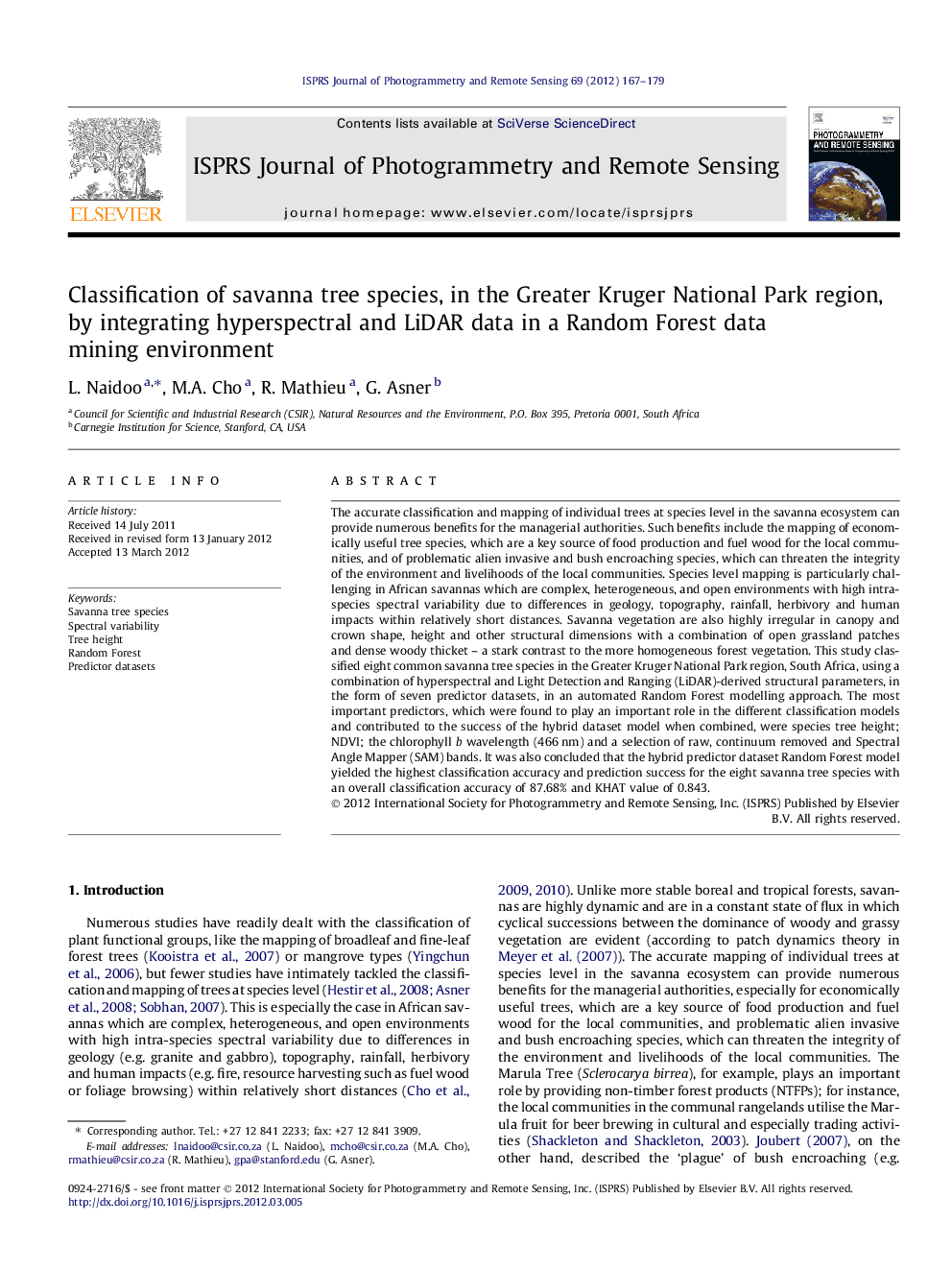| Article ID | Journal | Published Year | Pages | File Type |
|---|---|---|---|---|
| 555168 | ISPRS Journal of Photogrammetry and Remote Sensing | 2012 | 13 Pages |
The accurate classification and mapping of individual trees at species level in the savanna ecosystem can provide numerous benefits for the managerial authorities. Such benefits include the mapping of economically useful tree species, which are a key source of food production and fuel wood for the local communities, and of problematic alien invasive and bush encroaching species, which can threaten the integrity of the environment and livelihoods of the local communities. Species level mapping is particularly challenging in African savannas which are complex, heterogeneous, and open environments with high intra-species spectral variability due to differences in geology, topography, rainfall, herbivory and human impacts within relatively short distances. Savanna vegetation are also highly irregular in canopy and crown shape, height and other structural dimensions with a combination of open grassland patches and dense woody thicket – a stark contrast to the more homogeneous forest vegetation. This study classified eight common savanna tree species in the Greater Kruger National Park region, South Africa, using a combination of hyperspectral and Light Detection and Ranging (LiDAR)-derived structural parameters, in the form of seven predictor datasets, in an automated Random Forest modelling approach. The most important predictors, which were found to play an important role in the different classification models and contributed to the success of the hybrid dataset model when combined, were species tree height; NDVI; the chlorophyll b wavelength (466 nm) and a selection of raw, continuum removed and Spectral Angle Mapper (SAM) bands. It was also concluded that the hybrid predictor dataset Random Forest model yielded the highest classification accuracy and prediction success for the eight savanna tree species with an overall classification accuracy of 87.68% and KHAT value of 0.843.
